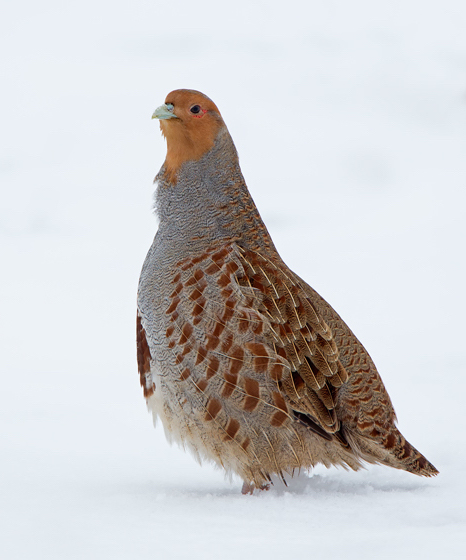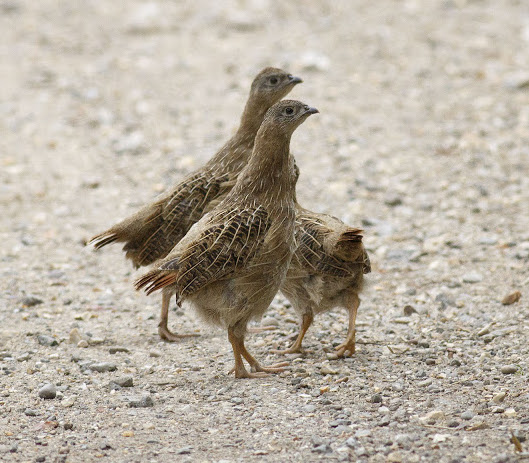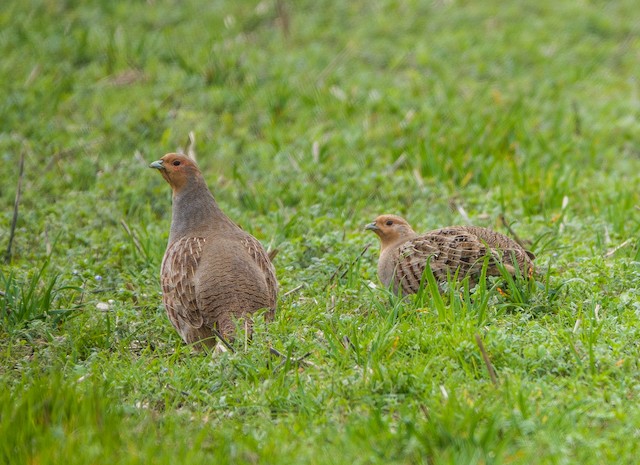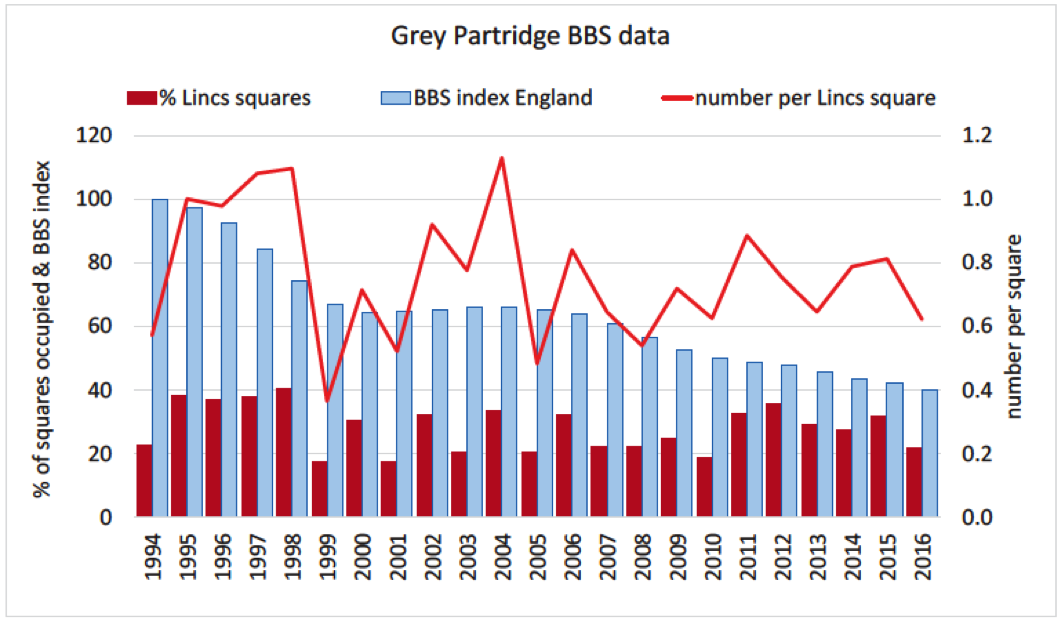Grey Partridge Perdix perdix



County records come in annually from more than 100 sites but records of confirmed or probable breeding from only about one tenth of these, and this probably understates the species’ status in the county. Numbers of grey partridges have declined substantially in the UK and sadly those in England have declined by 64% since 1994; it is now a red data species. One of our signature farmland birds and as a primarily agricultural county, Lincolnshire remains a stronghold for this species and the BBS evidence shows that it has not declined as fast here as elsewhere. Certainly, the East Midland trend has shown a stable even increasing population for the last 10 years or so. BBS data for 2016 indicates Lincolnshire holds around 12% of the British population and the BTO BBS index for 1995-2016 shows a fall of 58% in England as a whole and of 32% in East Midlands since 1995. The data for BBS squares in Lincolnshire in the chart below suggests the species may not have fared as badly in the county, although the sample is a small one (averaging around 17 BBS squares, 1994-2016). By contrast, the Partridge Count Scheme (PCS) of the Game & Wildlife Conservation Trust (GWCT) shows an 81% increase on participating UK sites since 2000. The Atlas estimated the population between 3700 and 7000 pairs and the Lincs share of the APEP4 estimate suggests a current population of around 4000 pairs. Some of the shooting fraternity in Lincolnshire understand the threat to this popular countryside bird and operate a voluntary shooting ban to help maintain it, but the recent decline over the last few years is worrying.

Chick survival is a key determinant of population change and average annual chick survival explains over two–thirds of variation in the year–on–year change in the BTO population index (Aebischer & Ewald, 2004). The PCS began in 1933 as a means of monitoring annual density and breeding success at some 90 farmland sites. The GWCT re-launched the scheme in 1998, and by August 2011, there were 1597 sites registered with the PCS from across the UK. Participants are asked to count the partridges on their land twice a year to enable the GWCT to monitor the number of breeding pairs and their productivity. A series of fact sheets and leaflets address management issues, covering the provision of nesting and brood-rearing habitat,predator control, best use of agri-environmental subsidies and shooting guidelines (see http://www.gwct.org.uk/partridge).The net result is that PCS contributors are more likely than non-contributors to use agri–environment options that benefit Grey Partridges, notably Beetle Banks and Conservation Headlands (Ewald et al., 2010; Aebischer and Ewald 2012).
The Game & Wildlife Conservation Trust’s Partridge Count Scheme returns (30-40 for Lincolnshire) indicate that the September density of birds on the sampled farms in the county declined from 21.5 per 100 ha in 2015 to 20.0 per 100 ha in 2016. Breeding success is poor in wet summers, but the recent (2015 and 2016) young-to-old ratio looks to have held steady in Lincolnshire, remaining unchanged at 2.5:1.
![GreyPartridge Table1]() References
References
Aebischer, N. J. and Ewald, J. A. (2004). Managing the UK Grey Partridge Perdix perdix recovery: population change, reproduction, habitat and shooting. Ibis146 (Suppl. 2): 181–191.
Aebischer, N. J. and Ewald, J.A. (2012). The Grey Partridge in the UK: population status, research, policy and prospects. Animal Biodiversity and Conservation 35.2: 353-362.
Ewald, J. A., Aebischer, N. J., Richardson, S. M., Grice, P. V. and Cooke, A. I. (2010). The effect of agri–environment schemes on Grey Partridges at the farm level in England. Agriculture Ecosystems and Environment, 138: 55–63.
(Article prepared in April 2018; inlcudes records to 2016 and updated from new Birds of Lincolnshire (2021), September 2022))

 References
References